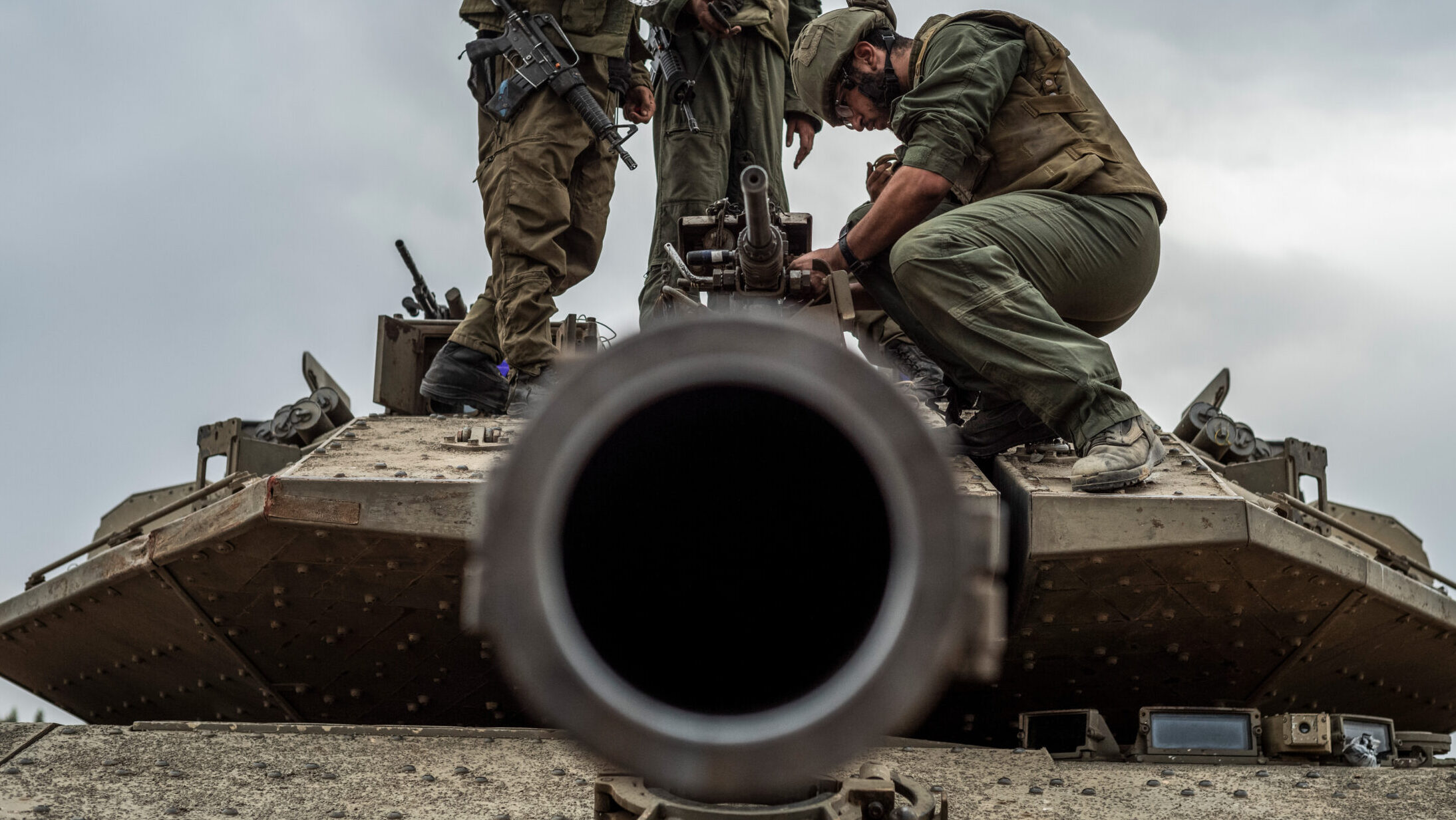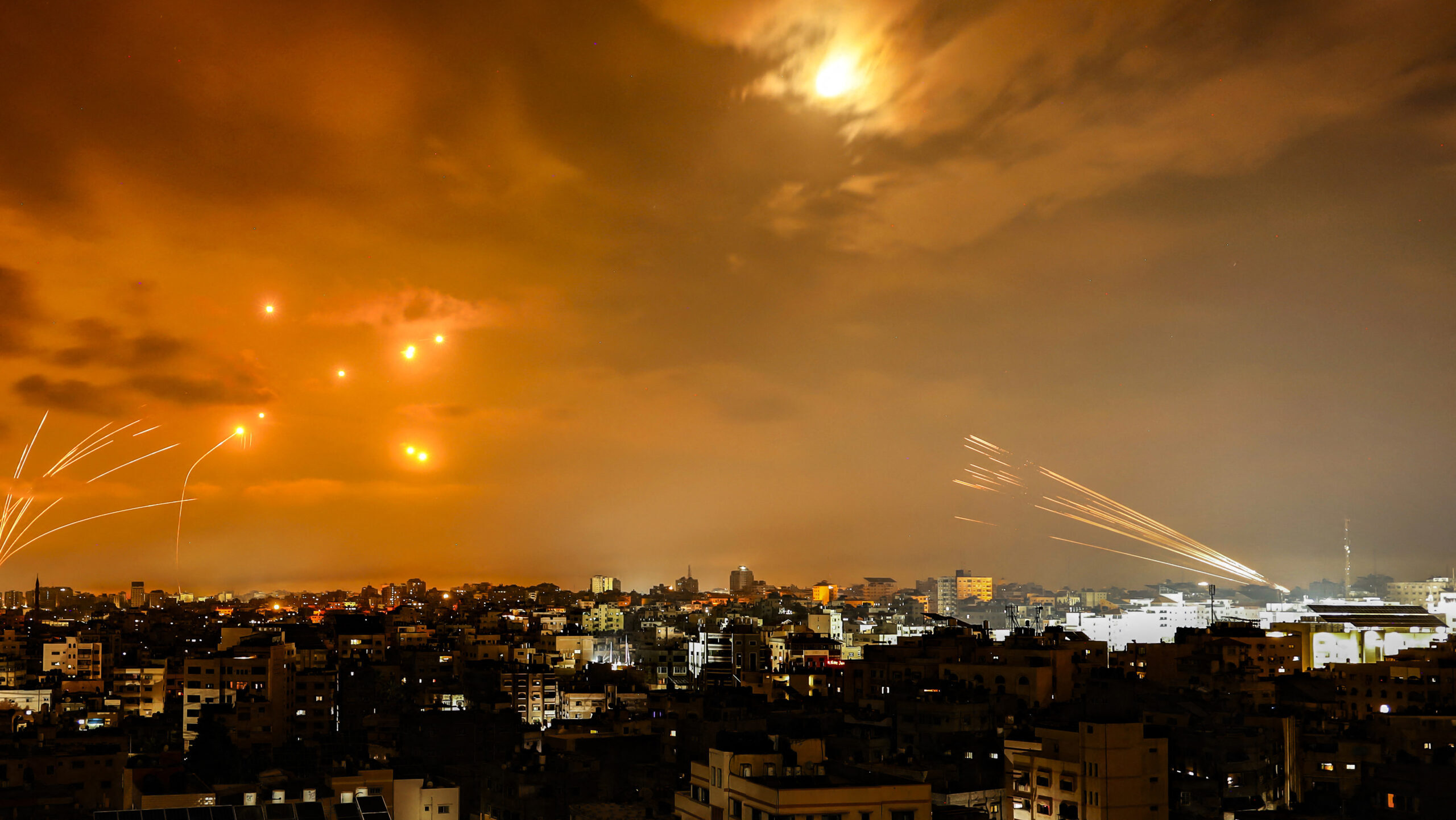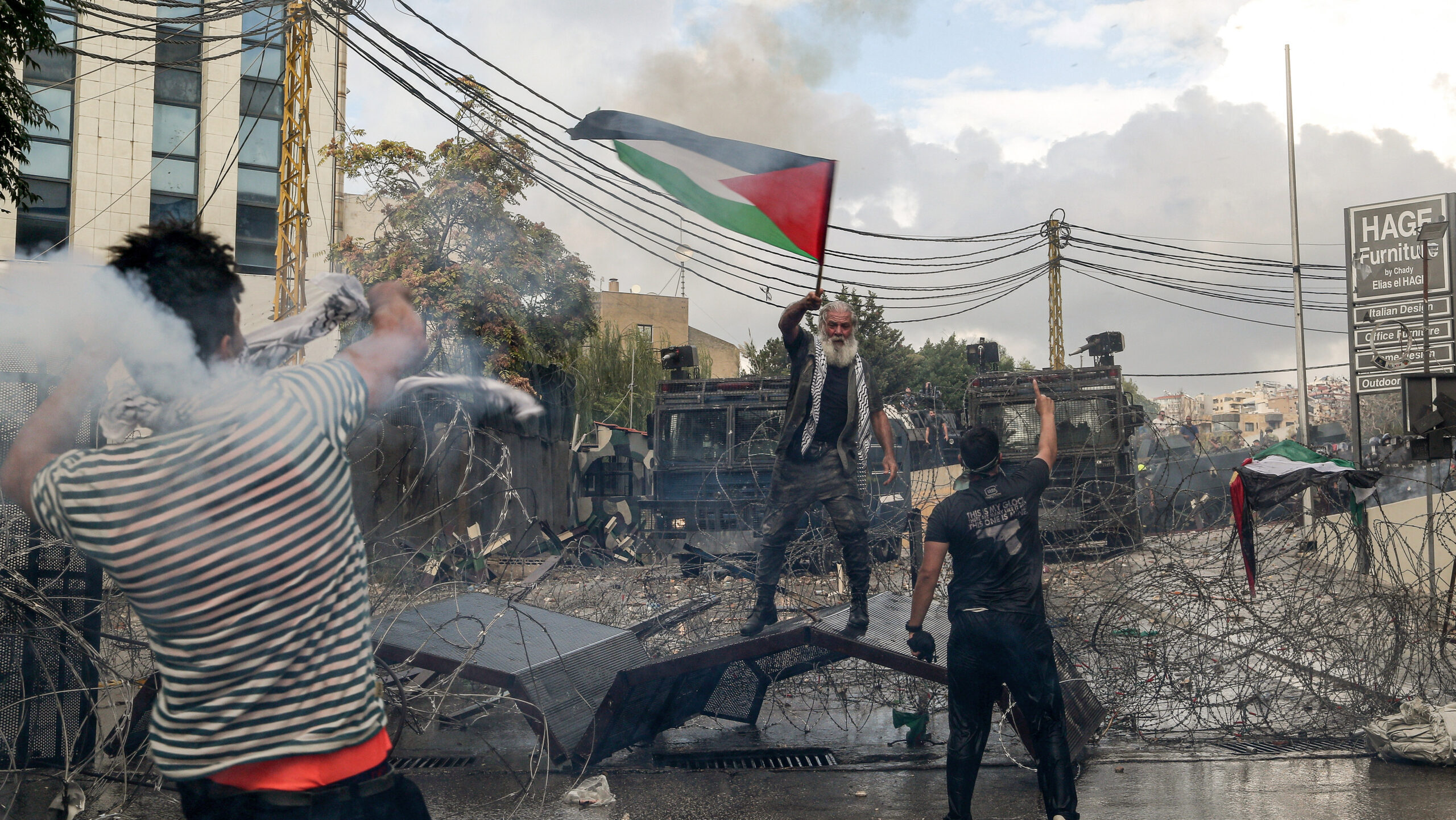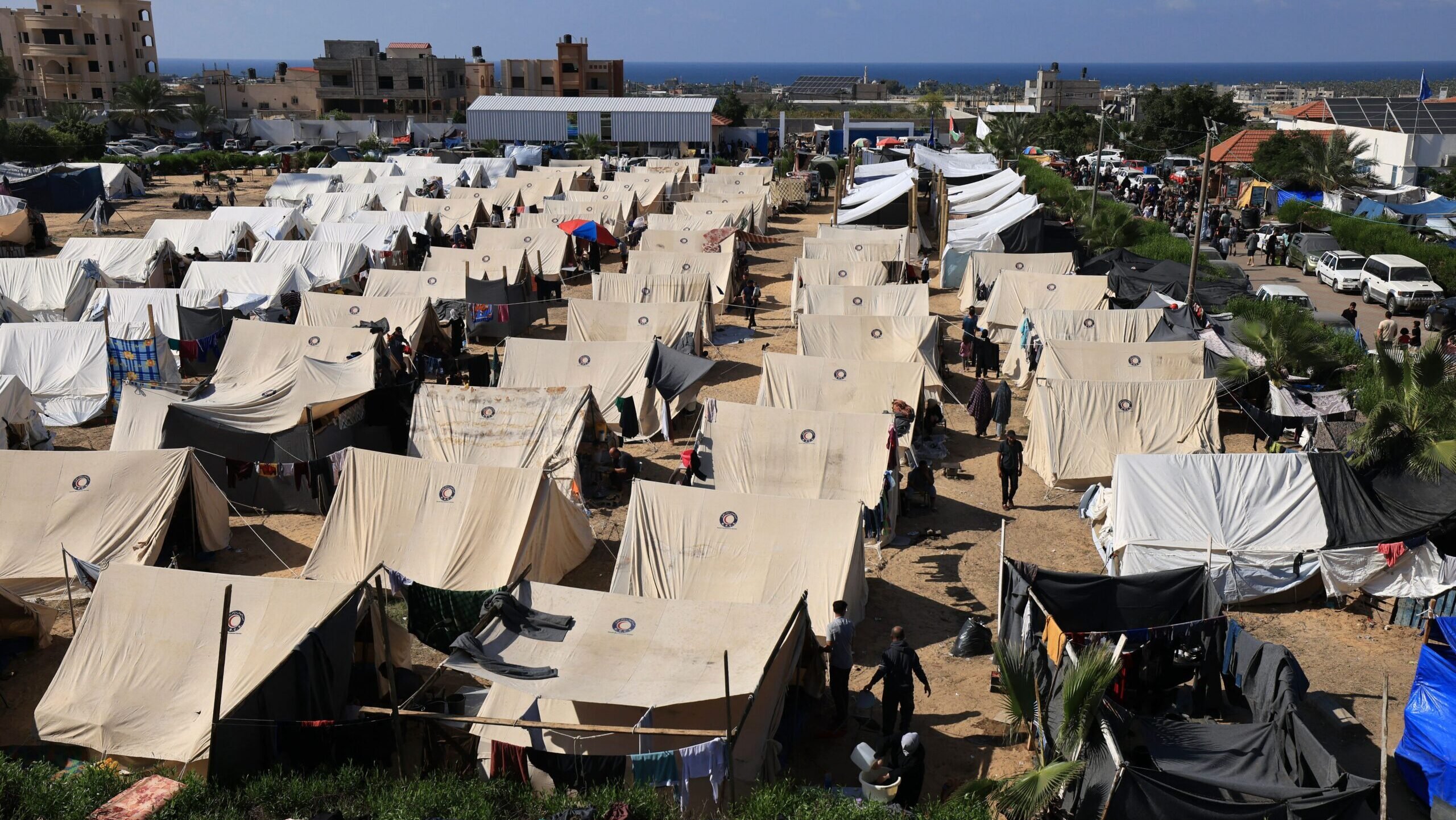RIAD KAHWAJI

Israeli soldier work on a tank at the Israel-Gaza border. Fighting between Israeli soldiers and Islamist Hamas militants continues in the border area with Gaza.
Two weeks after the surprise attack by Hamas on Israel, the return onslaught against the Gaza strip continues. The Hamas attacks resulted in the killing of 1,300 Israelis and capturing over 200 others, leading the Israeli government to declare all-out war on the Palestinian guerrilla group in Gaza — a goal that could prove hard to attain due to the difficult terrain of the highly populated enclave and political pressure from all sides over humanitarian deaths.
But analysts warn that as Israel attempts to emerge victorious in its war with Hamas, the fallout from the destruction in Gaza could destabilize the region with unforeseeable consequences.
“Israel cannot possibly end all terror attacks against Israelis; those have been going on for many decades. Israel can kill many prominent Hamas leaders and destroy the group’s ability to do large attacks like those on Oct 7,” Patrick Clawson, director for research at the Washington Institute for Near East Policy, told Breaking Defense. “And achieving even those goals could take a six-month war with massive destruction in Gaza and many hundreds of Israelis killed — will such a war be seen as an Israeli victory?”
The reality, said Gamal Sultan, senior fellow at the Cairo-based Al Ahram Center for Political and Strategic Studies, is that “the way things are going now in Gaza, there are more reasons to be a pessimist than an optimist for the future of the Middle East.”
As the Western nations race to try and influence the situation and the Gulf powers watch nervously, there are three overarching questions to trying to understand what might come next: Whether Israel’s goal of eliminating Hamas is realistic, whether another front in the war will explode, and what the long-term regional fallout from the operation could be.
Question One: Are Israeli Goals Even Possible?
Hamas is a Palestinian Islamic movement that advocates military resistance against Israel and opposes the mainstream Fatah movement which controls the Palestinian Authority. In 2007, Hamas fighters uprooted the PA from Gaza in a bloody showdown, and ever since it has been in control of Gaza.
Israeli leaders have compared Hamas’ actions on October 7 to the atrocities committed by the Islamic State in Iraq and Syria (ISIS) between 2013 and 2017, and have called on Western leaders to treat Hamas as ISIS — meaning support the elimination of the group.
Given that rhetoric, Israeli Prime Minister Benjamin Netanyahu — already a right-wing leader whose government includes controversial figures seen as anti-Palestinian — seems committed to a large, long military campaign. But squashing out Hamas won’t be easy.
“The Israeli government is seeking big goals in its military operation in Gaza. They won’t be satisfied with less than the complete elimination of the Hamas infrastructure in Gaza. The problem is that to achieve this they will need lots of time and they will incur heavy losses and cause severe civilian casualties,” Sultan told Breaking Defense.
“The more ambitious the objectives people expect from a war, the harder to achieve. Israel cannot possibly end Hamas’ existence; after all, the group has many leaders living in other countries,” added Clawson.
“Israeli leaders have promised to ‘eliminate’ Hamas … Hamas is less an organization and more an ideology, you cannot eliminate an ideology,” said Gawdat Bahgat, national security professor at the Near East and South Asia Center at National Defense University in Washington.
According to Brian Steed, assistant professor at the US Army Command and General Staff College, “the best Israel can actually do is to remove and destroy much of the Hamas military infrastructure and weapons that have been stockpiled across the Gaza Strip.”

Rockets fired by Palestinian militants from Gaza City are intercepted by the Israeli Iron Dome defence missile system in the early hours of October 8, 2023. Fighting between Israeli forces and the Palestinian militant group Hamas raged on October 8, with hundreds killed on both sides after a surprise attack on Israel prompted Prime Minister Benjamin Netanyahu to warn they were “embarking on a long and difficult war”.
“Any (Israeli) option for significant changes in the situation (in Gaza) requires a ground assault and any ground assault will incur significant Israeli casualties and Palestinian collateral deaths as well,” Steed told Breaking Defense — which would result in pressure both internally and from outside the country, where concerns about civilian deaths are already leading to inflamed tensions regionally.
Notably, Steed stressed that time is of the essence to ensure continued Western and domestic support for the military campaign in Gaza and to avoid escalation on other fronts.
“There is a clock ticking for how long the United States will allow Israel to do anything. It isn’t that Israel will have to follow the American timeframe, but Israel will not completely ignore it,” said Steed. “My initial assessment is that Israel has 30 days (plus or minus) to do whatever it intends to do and then the US administration will be making sounds to end the hostilities. The same is also true of the Israeli population that do not have an unlimited amount of patience or stomach for the casualties that they will have to absorb and witness.”
Question Two: Does The Conflict Expand?
The main concern for many inside and outside Israel is whether the conflict in Gaza expands to other fronts.
US President Joe Biden, speaking from the White House Thursday evening, underlined those concerns when announcing a new military aid package for Israel, saying, “We’re going to make sure other hostile actors in the region know that Israel is stronger than ever and prevent this conflict from spreading.”
The United States has deployed two naval strike groups to the eastern Mediterranean, led by the USS Eisenhower and USS Gerald Ford aircraft carriers. The US also deployed several squadrons of F-16, F-15 and A-10 warplanes to its bases in the Middle East. This show of force is expressly an attempt to deter other players — especially Iran and Hezbollah — from getting involved in the conflict.
The nightmare scenario isn’t hard to imagine: Iran gets directly involved, and suddenly Israel and Iran are exchanging missiles, the Lebanese border erupts and the US and its allies find themselves in a shooting war in the Middle East. So far, however, the deterrence message seems to be working, said Sanam Vakil, the director of the Middle East program at Chatham House think tank in London.
“The Iranian Supreme Leader’s multiple statements and interventions regarding the Gaza war indicate Iranian concerns about a wider conflict. Iran is posturing and balancing objectives. It is trying to rhetorically capitalize on Israeli vulnerability and the humanitarian catastrophe while also playing diplomacy in the Gulf to assuage and manage concerns of a regional conflict. At the same time, it also wants to project the transnational capabilities of the resistance axis” she said, referring to Tehran’s relationship with Hamas and Hezbollah.
The situation is tenuous, however. On Wednesday, US forces in Iraq came under attack by drones. On Thursday, US forces in Syria came under drone attack. That same day, a US naval ship intercepted rockets that Pentagon spokesman Brig. Gen. Patrick Ryder said were launched from Yemen and were “potentially” aimed at Israel. (The point of origin being Yemen would indicate those launches came from Houthi forces, yet another Iran-backed faction.) And during Biden’s speech, a fresh assault on US forces in Iraq was reported.
The biggest concern in the region is the border between Lebanon and Israel, where the Iranian-backed Hezbollah guerrillas are entrenched and armed to the teeth with missiles and weapons far more effective and lethal than those possessed by Hamas.

18 October 2023, Lebanon, Beit Awkar: A protestor throws back a tear gas bomb at soldiers securing the premises of the US embassy in Awkar north of Beirut during clashes following a pro-Palestine demonstration.
Israel had a big showdown with Hezbollah in the Second Lebanon War in 2006, where the Shiite group inflicted serious losses in the Israeli Defense Force (IDF). Ever since, the borders were relatively calm. But Hezbollah has spent the time since enhancing its capabilities by acquiring more missiles, especially ones that are highly accurate and can reach deep into Israel’s home front.
Hezbollah gunmen also became more hardened fighters by taking part in the fighting on the Syrian regime side against the opposition groups between 2013 and 2016. According to the Party’s Secretary General Hassan Nasrallah the group can mobilize up to 100,000 fighters that are armed with a variety of artillery rockets, anti-ship missiles and a big number of Iranian-made drones
“A northern front would expose Israel at a time of vulnerability and challenge the IDF to manage a two front military crisis that it has not experienced for decades,” said Vakil.
Hezbollah fighters have been exchanging fire with the IDF troops along the northern borders since Oct. 8. Although there were casualties on both sides in the daily skirmishes, to date both sides have kept the confrontations limited and avoided large escalation.
Israel seems to be anticipating the possibility of dealing with a second front and have deployed large numbers of the reserves it mobilized to the borders with Lebanon.
“A northern front would make Israel all the more determined to fight on in Gaza, especially if that northern front involved thousands of rockets/missiles hitting Israel,” said Clawson. “That is what the mobilization of 360,000 reserves is meant to show – those numbers are way in excess of what a Gaza campaign will need.”
Steed does not believe the northern front will have too much impact on the Gaza campaign if it was limited to firing missiles. “It would depend on the scope and scale of the front. If it is relatively limited to rockets and missiles then none. If there are regular ground incursions then that might change the calculus a bit,” he said.
“Hezbollah could take the Hula Valley of Israel if it was committed to an all-out effort and such an attack would then cause a serious degradation of Israeli capability as Israel would be forced to regain lost territory which would be the preeminent priority, but I think this is well outside Hezbollah’s intent or objectives,” Steed added.
Question Three: What Comes Next?
Perhaps the biggest long-term question on the mind of many experts and officials in the region is what happens after the guns go silent and Israel declares its military objectives are fulfilled in Gaza.
There is a belief among experts that the Israeli government does not have a clear vision of what to do, especially if the IDF troops end up occupying Gaza. Netanyahu does not have a good track record in taking steps to enhance the prospects of the two-state solution and peace with the Palestinians, and already the military actions in the last two weeks have inflamed anti-Israeli sentiment around the region.
Additionally, the Palestinian Authority in the West Bank is weak and its factions are fragmented, so are unlikely to be able to control a devastated Gaza in any serious way. “If Hamas is displaced from ruling Gaza, Israel has not a clue what will replace it,” said Clawson.
“At present, the PA completely lacks the administrative or political capacity to do so. One can paint an optimistic picture of an interim international administration in Gaza while the PA is reinforced to be able to take over, but that is so optimistic,” he added. “In that best case, with a reinforced PA, and with Israel’s political landscape shifting to reject not only Bibi (Netanyahu) but his policies, one can paint a picture of the PA and Israel agreeing to a two-state solution on principles of separating the two peoples. But that seems much less likely than muddling along.”

Tents for Palestinians seeking refuge are set up on the grounds of a United Nations Relief and Works Agency for Palestine Refugees (UNRWA) centre in Khan Yunis in the southern Gaza Strip on October 19, 2023, amid the ongoing battles between Israel and the Palestinian group Hamas.
Sultan agrees. “The current Israeli government does not seem to anticipate a peace process to start the day after the end of the Gaza war.”
Sultan noted that several regional “actors see an opportunity in this crisis and would like to see the United States exert pressure on Israel to exploit the current developments to launch a new political process in the region. This will be difficult due to problems related to divisions within the Palestinian ranks and the political landscape in Israel is not very conducive for any serious peace talks based on the two-state solutions.”
Steed suggests that “an external and respected Arab power come in and control the Palestinian territories, but I know that no one wants to do that.”
The fallout from the military actions will also have ramifications for Israel’s attempts to strengthen relations in the region. While it is unlikely to lead anyone to abandon the Abraham Accords, it could lead to delays in normalizing relationships with Saudi Arabia, experts previously told Breaking Défense. In Egypt, President Abdel Fattah El-Sisi, facing political headwinds at home, seems to have seized on anti-Israel sentiment as a way to bolster his position, calling for a “Friday of Rage” in support of Palestine.
Sisi has voiced his opposition to the transfer of Palestinian civilians in Gaza to Sinai as proposed by some Israeli officials as a way to spare the civilians in the Strip from the war. Sisi said Egypt will not allow another transfer of Palestinians from their land, and moving them into Sinai will not end Palestinian attacks on Israel.
“There are officials in Israel that see in this crisis an opportunity to displace hundreds of thousands of Palestinians and send them to Sinai,” Sultan said. “Egypt will not allow this to happen.”
Jordan witnessed its biggest mass demonstrations ever in protest of the Israeli offensive on Gaza, prompting King Abdullah II to plea with the West for intervention to end the war and achieve a two-state solution. Meanwhile, Western nations are telling their citizens to consider leaving Lebanon for safety, a retrenchment in the region that could quickly spread if anti-American, anti-Israel protests continue to occur.
No comments:
Post a Comment